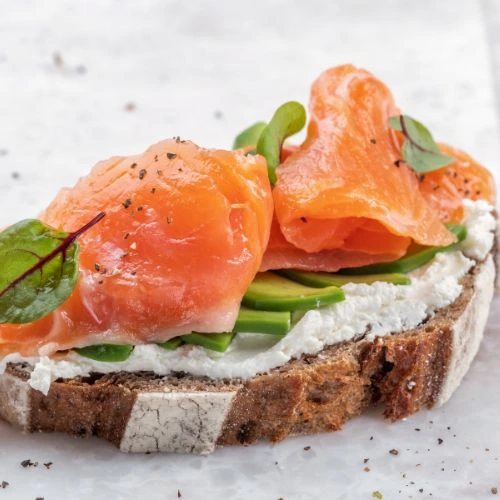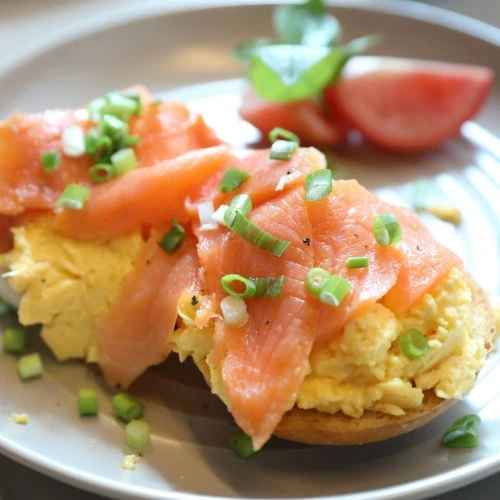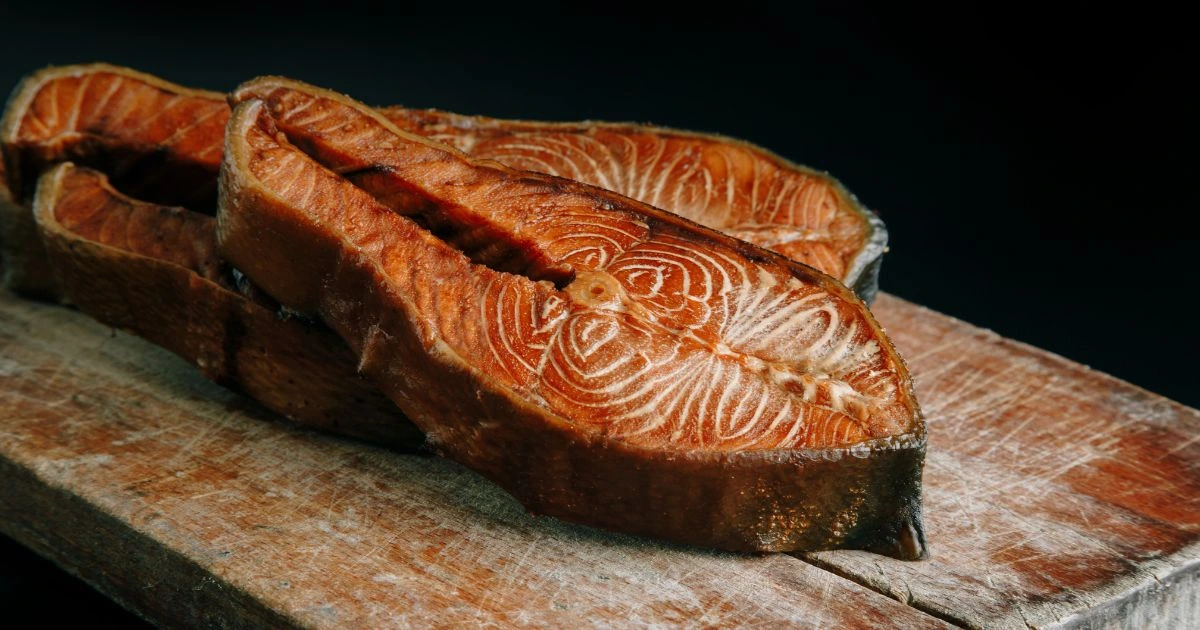That first bite of smoked salmon leaves a lasting impression you won’t soon forget. Whether it’s nestled atop a cream cheese-smeared bagel or folded into a delicate salad, the rich, smoky flavor and melt-in-your-mouth texture are the result of careful preparation and precision. And at the heart of it all? Internal temperature.
Nailing the smoked salmon internal temperature is the key to keeping it safe to eat while unlocking that crave-worthy flavor you love. Whether you’re an aspiring home smoker or just curious about how to ensure you’re eating salmon safely, this guide will walk you through everything you need to know—in a way that’s easy to follow and packed with practical tips.
Table of Contents
Why Internal Temperature Matters in Smoked Salmon
Safety First: Avoiding Harmful Bacteria
When dealing with seafood, food safety should always be top of mind. Salmon, like all fish, is susceptible to bacteria and parasites that can cause illness if not handled or cooked properly.
- The FDA advises that fish should be cooked to an internal temperature of 145°F (63°C) for safe consumption.
- This temperature ensures that pathogens such as Listeria and parasites are destroyed.
- For cold smoked salmon, which isn’t cooked during the smoking process, curing is essential to ensure safety.
Flavor and Texture Depend on Temperature
Aside from ensuring safety, the internal temperature of your salmon plays a major role in shaping its final texture and flavor:
- Lower temps preserve a soft, silky texture ideal for charcuterie or sushi-style servings.
- Higher temps give you firmer, flakier fish—great for adding to pastas, salads, or breakfast dishes.
By monitoring internal temp, you get consistent results every time.
Cold Smoked vs. Hot Smoked Salmon: Temperature Differences
You’ll often hear people talk about smoked salmon, but not all smoked salmon is the same. There are two main types: cold smoked and hot smoked salmon. And they’re worlds apart when it comes to internal temperature.
| Type of Smoking | Internal Temp Goal | Smoking Temp Range | Texture & Flavor |
| Cold Smoking | Below 90°F (32°C) | 68–86°F (20–30°C) | Delicate, silky, raw-like texture |
| Hot Smoking | 135–145°F (57–63°C) | 175–225°F (79–107°C) | Firm, flaky, fully cooked flavor |
Cold Smoking
- Applies gentle heat over an extended period to infuse the salmon with rich smoky flavor.
- Fish remains uncooked, requiring careful curing beforehand.
- Best for appetizers, charcuterie boards, or eating cold.
Hot Smoking
- Cooks the salmon during the smoking process.
- Generally safer for beginners because it involves cooking.
- Best for serving warm or using in cooked dishes.
How to Measure Smoked Salmon Internal Temp Accurately
Choose the Right Thermometer
If you want great results, guesswork isn’t your friend. You’ll need a reliable instant-read digital thermometer:
- Place it into the thickest section of the salmon.
- Ensure it’s not touching the smoker tray or bones.
- For hot smoking, aim for 135–145°F.
Avoid Common Mistakes
- Avoid judging by appearance alone—it’s the internal temperature that reveals the true doneness.
- Let the fish rest for a few minutes after removing it from the smoker for accurate readings.
- Double check different spots if your fillet is uneven in thickness.
How to Smoke Salmon at the Right Internal Temp
Smoking salmon isn’t complicated, but it does take patience and attention. Here’s a basic hot smoked salmon recipe to help you practice.
Ingredients & Prep
| Ingredient | Amount | Notes |
| Fresh salmon fillet | 1–2 lbs | Skin-on preferred |
| Kosher salt | 1/4 cup | For dry brine or cure |
| Brown sugar | 1/4 cup | Adds sweetness and caramelization |
| Black pepper | 1 tbsp | Optional seasoning |
| Dill or lemon zest | To taste | Optional aromatics |


Step-by-Step Smoking Instructions
Step 1 – Cure the Salmon (Especially for Cold Smoking)
- Mix salt, sugar, and pepper.
- Coat salmon completely and refrigerate for 12–24 hours.
Step 2 – Rinse and Dry
- Rinse off the brine under cold water.
- Pat dry and place uncovered in the fridge until a tacky skin (pellicle) forms.
Step 3 – Smoke the Salmon
- Preheat smoker to 200°F for hot smoking.
- Add wood chips like alder, cherry, or apple.
- Smoke until internal temp reaches 135–145°F.
- Rest for 10 minutes before serving or chilling.
Tips for Perfectly Smoked Salmon Every Time
Here are a few trusted tips to elevate your smoking game:
- Use a digital thermometer for consistent results.
- Let salmon rest after smoking for maximum flavor retention.
- Dry thoroughly before smoking so the smoke adheres well.
- Avoid over-smoking; too much smoke can overpower the natural salmon flavor.
- Choose quality salmon, ideally wild-caught or sustainably farmed.
Common Mistakes to Avoid
- Skipping the thermometer: Texture and appearance alone won’t give you an accurate reading.
- Overcooking: Salmon dries out quickly once it passes 145°F.
- Smoking too hot when cold smoking: Cold smoking must stay under 90°F.
- Brining too briefly: Under-brining can lead to bland results.
- Not letting it rest: Skipping the resting step leads to dry salmon.
FAQs About Smoked Salmon Internal Temp
What’s the safe internal temperature for smoked salmon?
For hot smoked salmon, aim for an internal temperature of 145°F (63°C). Cold smoked salmon is not cooked and relies on curing and cold storage.
Can I eat cold smoked salmon raw?
Cold smoked salmon is technically raw, though it’s cured. It should be stored at refrigerator temperatures and avoided by pregnant women and immunocompromised individuals unless pasteurized.
How long does it take for salmon to reach 145°F in a smoker?
Depending on thickness and smoker temp, it can take 1 to 3 hours. Use your thermometer, not the clock.
Do I have to brine before smoking salmon?
Brining isn’t strictly required for hot smoking, but it enhances flavor and helps retain moisture.
Conclusion: Mastering Temperature for Safer, Tastier Smoked Salmon
Now you know the not-so-secret ingredient to perfect smoked salmon: temperature control. Whether you’re cold smoking for that buttery texture or hot smoking for a firmer bite, getting the internal temp right ensures that every slice is both safe to eat and full of flavor.
Next time you fire up your smoker, keep your thermometer close and your patience steady. You’ll be rewarded with salmon that’s not just good—it’s gourmet.
Ready to try it yourself?
Grab your favorite fillet, prep your brine, and make your first batch of smoked salmon like a pro. Got questions or want to share your results? Drop a comment and join the conversation!

